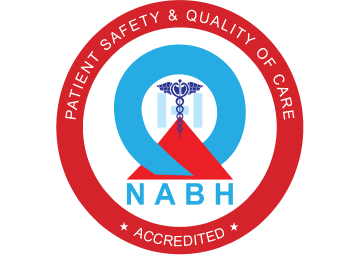Lower Body Lift
What is Lower Body lift?
- Lower Body lift is an operation in which the excess skin and fat below the umbilicus and the lower back is removed to give the abdomen a better shape and make it look nicer
Who will benefit from a Lower Body lift?
- When people gain and lose weight as following bariatric surgery ( weight loss surgery) and significant weight loss with diet and exercise, the lower abdomen is stretched and refuses to go back. No amount of diet and exercise can overcome the laxity of the skin especially if it has stretch marks. In this situation, the excess skin and fat have to be removed by surgery. When the skin and fat are excessive in the front of the abdomen, the excess is removed from the front and this is called as abdominoplasty. When the excess skin and fat are in the front and sides of the lower abdomen it is called as extended abdominoplasty. When the excess skin and fat are removed in the front, sides and the back of the lower abdomen it is called as lower body lift.
Where will the scar be after an Lower Body lift?
- The scar will be a transverse scar over the lower abdomen extending circumferentially across the lower abdomen and back. This will be hidden while you wear a pant, skirt or a saree and we will try to hide it under the bikini line.
What is done during the operation Lower Body lift?
- The operation Lower Body lift is done under general anaesthesia. It lasts for 3 to 5 hours depending on each patient. During this operation the skin and fat over the abdomen are lifted from the underlying abdominal musculature, redraped and the excess skin and fat are removed. If there is an underlying weakness of the abdominal wall causing divarication of recti, we will repair it and strengthen the abdominal wall musculature. To ensure that there is no excess collection of serous fluid or blood collecting under the flap we will place three surgical drains to drain them. The umbilicus or the belly button is sited at the right place, and the wound is closed
Will I be able to lose a lot of weight with this procedure?
- This operation is primarily a body contouring operation and not a weight reducing operation. After the operation, you can expect a decrease of about 1-3 kg weight. Some patients may not reduce weight at all. So if reducing weight is your primary goal, this operation is not for you.
What is the normal post-operative course?
- Soon after the operation, the patient may feel slightly tight over the abdomen as the abdominal musculature has been repaired and the excess skin has been removed. This will go away in 2 to 3 weeks. We will give adequate painkillers to control the pain. We will monitor the amount of fluid in the drains daily and will remove them as soon as the amount of fluid in the drain is very less. Depending on how comfortable the patient is we will try to mobilise the patient from the first or second day after surgery. We will discharge the patient as soon as the patient feels comfortable walking to and from the toilet and after the drains have been pulled out. This amounts to approximately 5 to 7 days of hospital stay. Patients who stay near and are happy to monitor the drains may be discharged earlier around the third or fourth day from surgery.
What are the complications associated with this procedure?
Delayed wound healing and skin necrosis :
- A small subgroup of patients may have delayed wound healing and may have minimal skin necrosis ( skin becomes black due to reduced blood supply). If the amount of necrosis is very less, it can be managed with regular dressings. If the amount of skin necrosis is more, then we may take the patient back to the operation theatre, trim it and resuture the area.
Seroma :- Seroma is excess serous fluid in the cavity below the abdominal flap. This usually occurs later than 3 weeks and is usually aspirated out. When it comes repeatedly, we may take the patient to the operation theatre and remove the excess fluid.
Mild asymmetry or some excess fat over the sides :- In spite of all our efforts there maybe some mild asymmetry or excess fat over the sides of the abdomen which can be revised by a minor procedure.
Decreased sensation over the lower abdomen :- The sensations can be reduced or feel different over the lower abdomen for a while as the abdominal flaps have been raised. This is expected, and the sensations will return in a few months.
Hypertrophic scarring :- Each person heals differently and some patients may develop raised large scars called hypertrophic scars. They will get better with techniques like scar massage, silicone sheets and compression
Deep Vein Thrombosis (DVT) and Pulmonary Embolism :- DVT is formation of blood clots in the veins of the legs. This can happen as the surgery is a prolonged surgery. This clot may go on to the lungs causing difficulty in breathing. Fortunately this complication is not common and rare as we will take a lot of efforts to prevent this. We will be giving blood clot thinners before surgery and after surgery. We will also have sequential compression devices which will keep pressing the legs so that the legs are not static and this will help prevent DVT.
Facts at a glance
Surgery Time 3 to 5 hours Hospital Stay 3 - 5 nights Walk to the Toilet Next day Take a shower 2 days Reasonably mobile 2 weeks Driving 3 weeks Sport & exercise including gym 8 weeks Full recovery 8 weeks Time off work 2-3 weeks Bras and garments Yes Abdominal binder Long-term issues May require scar management




